A few months back I posted the 10 Activities for Learning Letters and Sounds activity kit that I developed for a few first graders who hadn’t yet mastered letters and sounds. The idea behind the kit was to provide fun, hands-on activities for either classroom voluteers or parents to work with their child at home. Well, since that time, those little first graders have learned their letters and sounds and are now ready to focus on sight words. So here’s the activity kit for learning the Dolch sight words. Of course we’ll begin with list 1 (first 25), but I’ve made the activities through list 3.
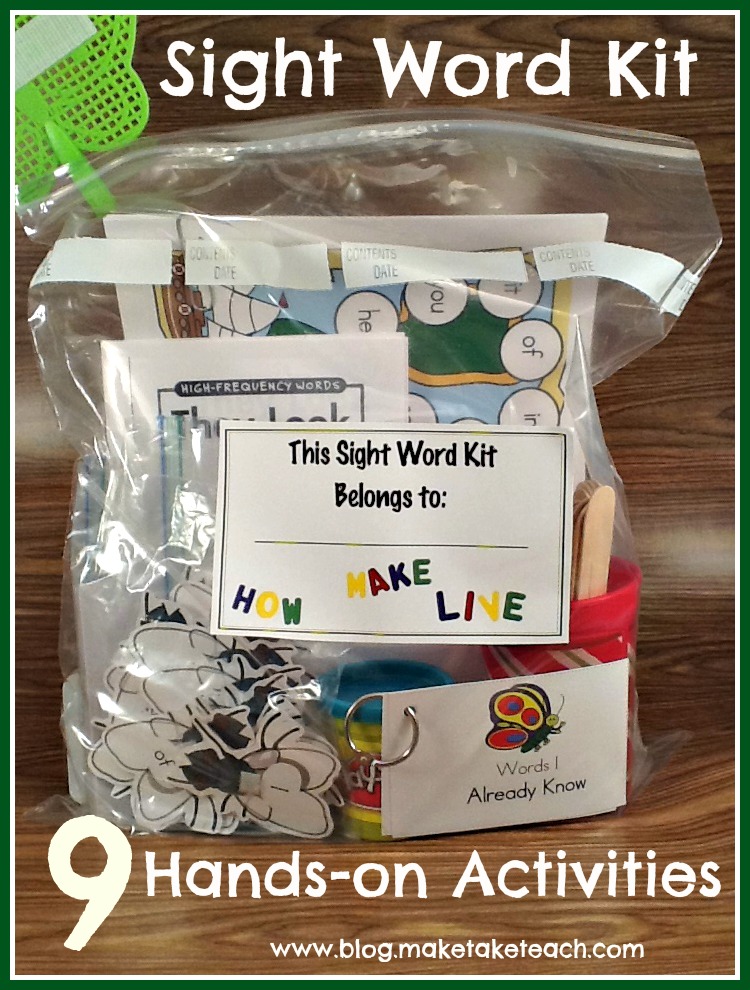
To assemble your very own kit, first print this 4-page pdf. This file contains step-by-step directions for the teaching session as well as a recording form for your volunteer or parents to track the amount of time spent each day working with your student.
Click the following link to download this pdf Learning Sight Words
It’s important to know which words your student knows and doesn’t know so that you can determine the specific words that require learning and practice. Be sure to assess the student’s sight word knowledge before beginning the direct teaching sessions. It’s also important to periodially reassess your student (progress monitoring) so that you can determine the student’s rate of growth.
Click HERE to download the FREE sight word assessment for the Dolch 220 sight words
After assessing the student, I separate the sight word cards into 3 piles- Words I Know, Words I am Learning and Words I Will Learn. You can make your own flashcards on index cards using the assessment form as your guide. If you download the Multi-Sensory Teaching of Sight Words file from my TpT store, the flashcards and multi-sensory cards for all Dolch 220 sight words are printed for you.
Each session begins with a quick flashcard review using the “Words I Am Learning” ring. If the student correctly says the word, a “+” is written on the back of the card. When there are 5 “+”‘s (meaning the student named the word correctly on 5 separate occasions), the card is moved to the “Words I Already Know” ring. Cards from the “Words I Will Learn” ring are added to the “Words I Am Learning” ring after being introduced with a multi-sensory activity. Sound confusing? It’s actually pretty easy and the system works really well. The specific directions for moving cards from ring to ring are provided in the Multi-Sensory Teaching of Sight Words activity.
For this particular kit, I put in two quick and easy multi-sensory activities- Bendaroos and Play Doh. You can certainly add your own favorite multi-sensory activities as there are many to choose from. Shaving cream, glue, yarn, pipe cleaners, sand….. to name just a few.
The amount of words introduced during a teaching session depends on your student’s learning rate. Typically, I begin with introducing two words during a session. After awhile you will can determine if you can add more or if you need to spend time reviewing words that you introduced previously. If your student is consistently missing a word during the flashcard drill, provide extra practice with a multi-sensory activity.
Click HERE to download the multi-sensory cards and flashcards from my TpT store
I like to quickly incorporate the sight word building activity into the teaching sessions. You can use templates with words from the “Words I Am Learning” ring. Finding, moving and naming the letters while building sight words is a fun way to practice the words.
Click the following link to download sample templates 5 Building Sight Words Templates
Click HERE to download the sight word templates from my TpT store
After building sight words, I want the students to have practice writing the words. I found these dry erase boards in the education section at our local Dollar Tree. I like these because they have the writing lines and this is perfect for students at this stage. You get 4 dry erase strips for only $1.00. It’s great for making multiple sight word kits.
Be sure to differentiate the writing activity. For some students, you may need to write the sight words on the top line and have him/her copy the words. For other students, using the flashcard would be appropriate. It’s our hope, however, that we can eventually move to just saying the word and having the student write it on the board.
After the writing activity I like to incorporate a game. The primary purpose of the game is to practice the words (not so much introducing new words). When choosing the activity or the words for the activity, combine the “Words I Am Learning” and “Words I Already Know” words. One of my all-time favorite games for practicing sight words is the Fiddle Sticks game. All you need to make the game is a cup, large craft sticks, a black Sharpie marker and a colored Sharpie marker.
To create the game, simply write words on the end of each stick with the black Sharpie marker. Color the tip of one stick. Place all the sticks word side down in the cup. Players take turns choosing sticks and reading words. The player who picks the colored-tip stick must put all their sticks back in the cup and play continues. The player with the most sticks at the end of time wins the game. So incredibly simple, but the students absolutely love it!
Here’s another simple game, but also a kid-favorite. The Fly Swatting Sight Words game is so much fun! You’ll have to print the sight word flies, cut them out and place a little velcro dot on each fly. Pick up a fly swatter at any dollar store and place a strip of velcro on the swatter. The students take turns “swatting” the flies and reading the words on the flies that stick to the fly swatter. Sounds a little crazy, but it really is an all-time favorite.
Click HERE to download the Fly Swatting Sight Words from my TpT store.
I also like to add in activities that capitalize on students’ interest. We have quite a few soccer players in our area so I made this fun sight word soccer game. There’s also a football version (The Big Football Game) of this activity if your students prefer football (working on basketball and baseball).
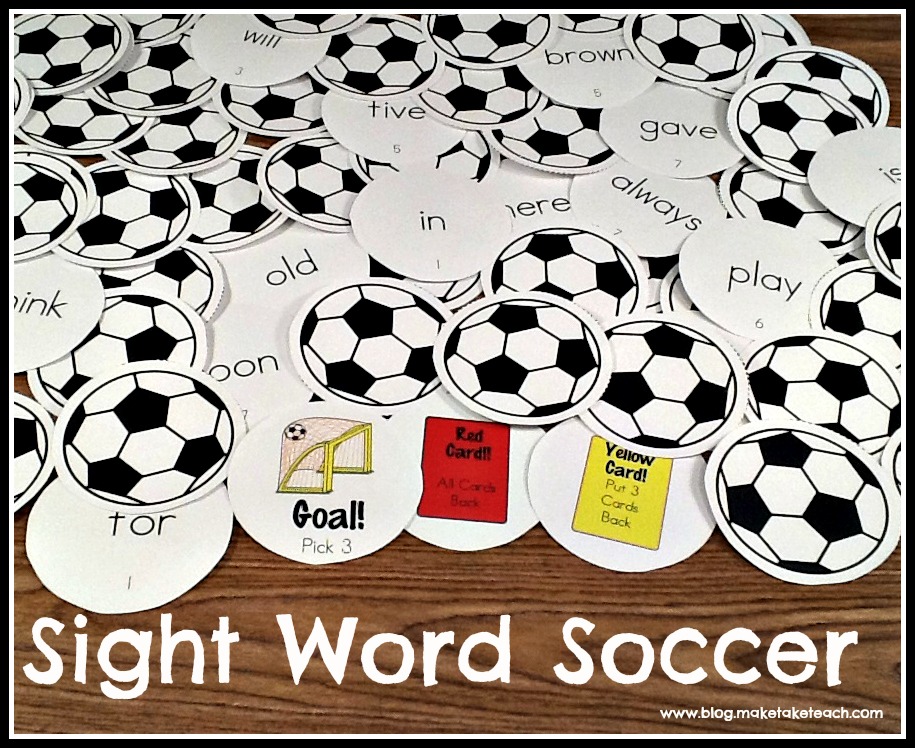
Click HERE to download the Let’s Play Soccer game from my TpT store.
I’ve also included a few sight word game boards into this kit. Game boards are a quick and easy way to practice words.
Click HERE to download the Dolch Sight Word Game Boards from my TpT store
The bottom-line purpose for learning sight words is to recognize those same word in text. We have many students who can identify words on flashcards, but then when they come across the same word in a book, are just at a loss. It’s very important to incorporate actual reading into your teaching sessions. The Reading a-z high frequency words books are ideal for this purpose. When you join Reading a-z (it’s a very reasonable yearly rate), you have access to literally hunderds of downloadable books. You can print the books in color or in black and white.
Click HERE or on the Reading a-z picture to access their website.
Oh my goodness…this one long blog post. I jam-packed this kit with tons of fun sight word activities and just wanted to share them all with you. Don’t worry if you don’t have time to do them all in each and every teaching session. How long you spend on each activity and how many activities you incorporate into a session will depend on many factors such as your student’s attention span, time you have within your classroom and your student’s rate of learning. Just hope there are a few ideas that you can use with your kiddos who are now learning their sight words.
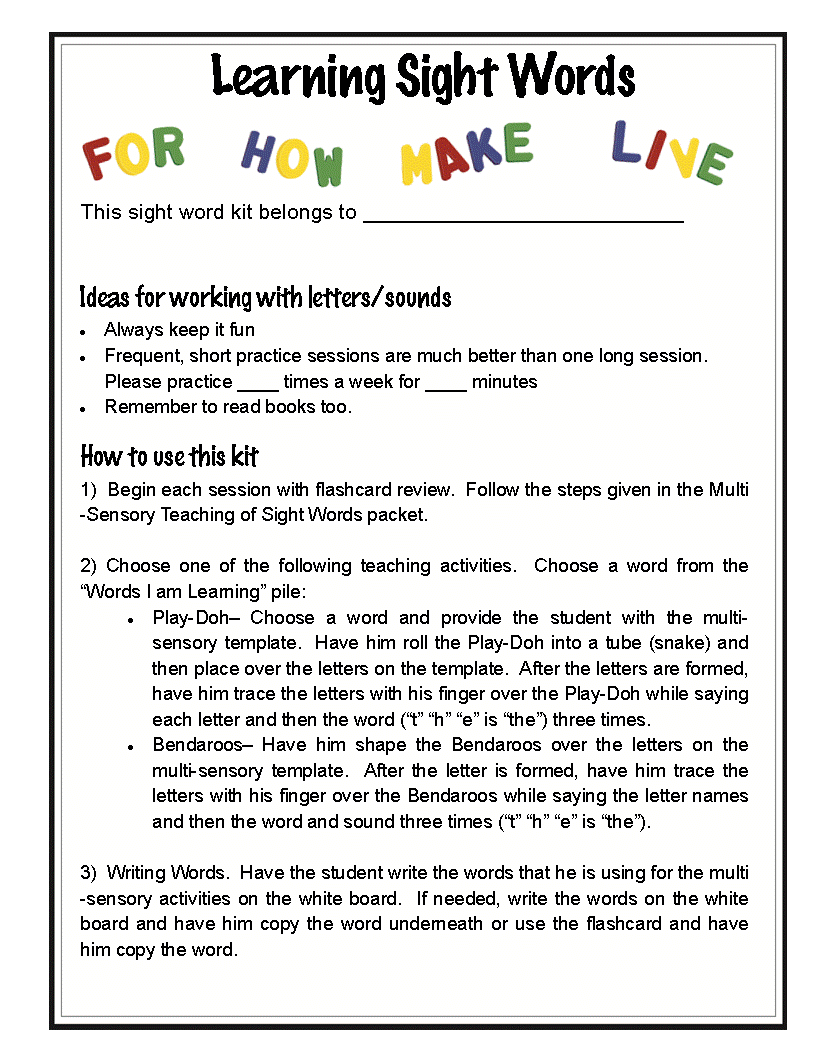
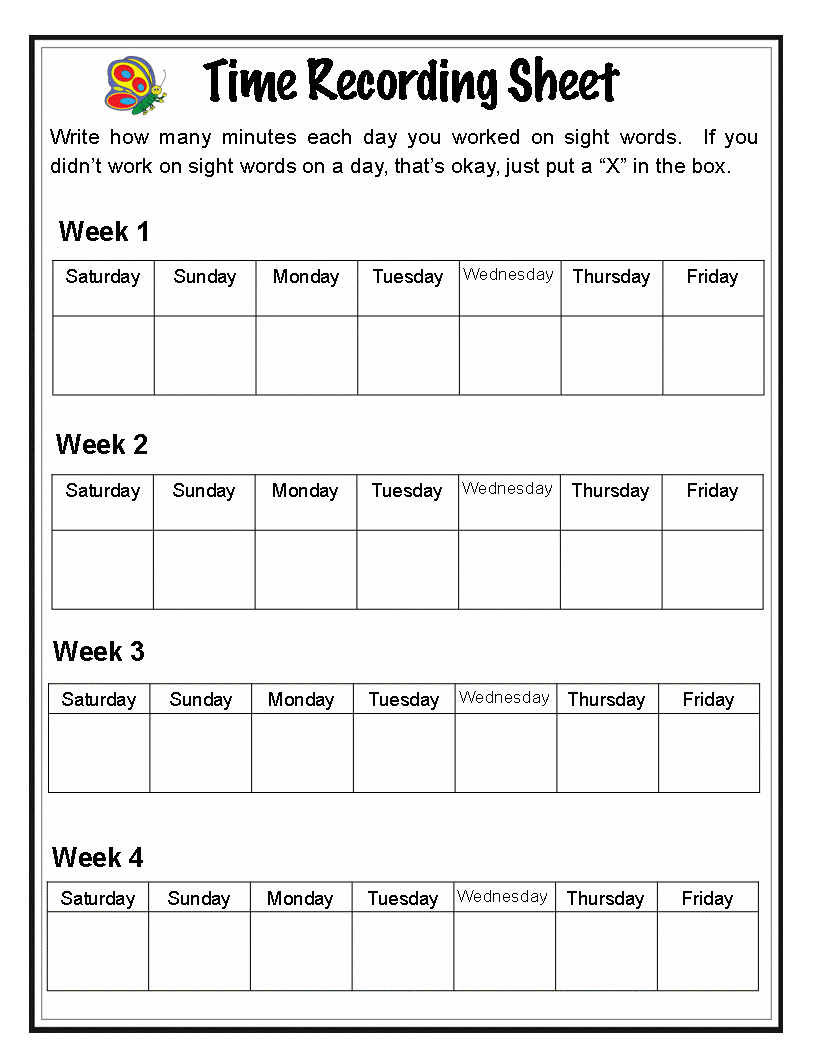
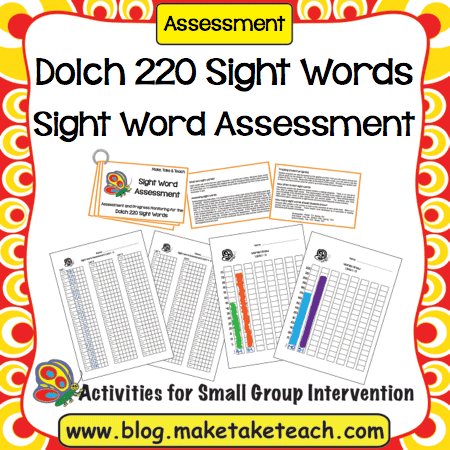
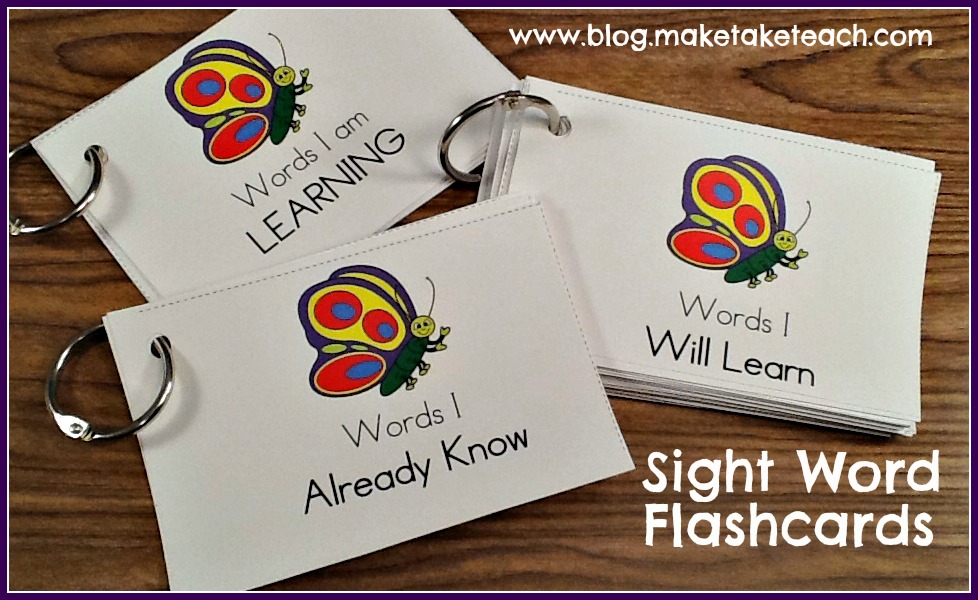
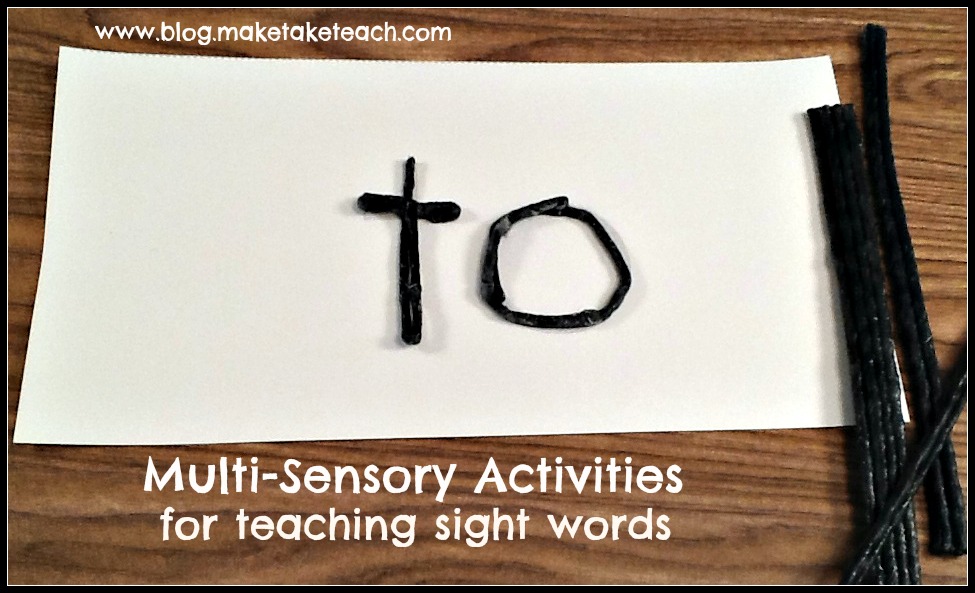
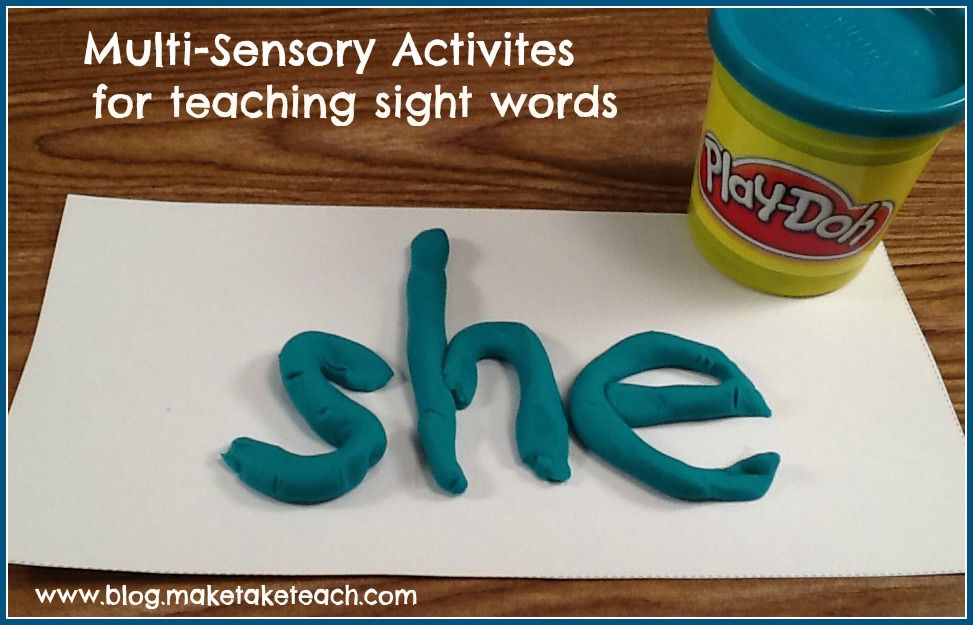
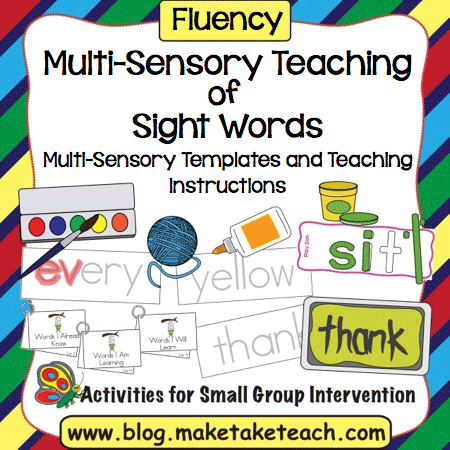
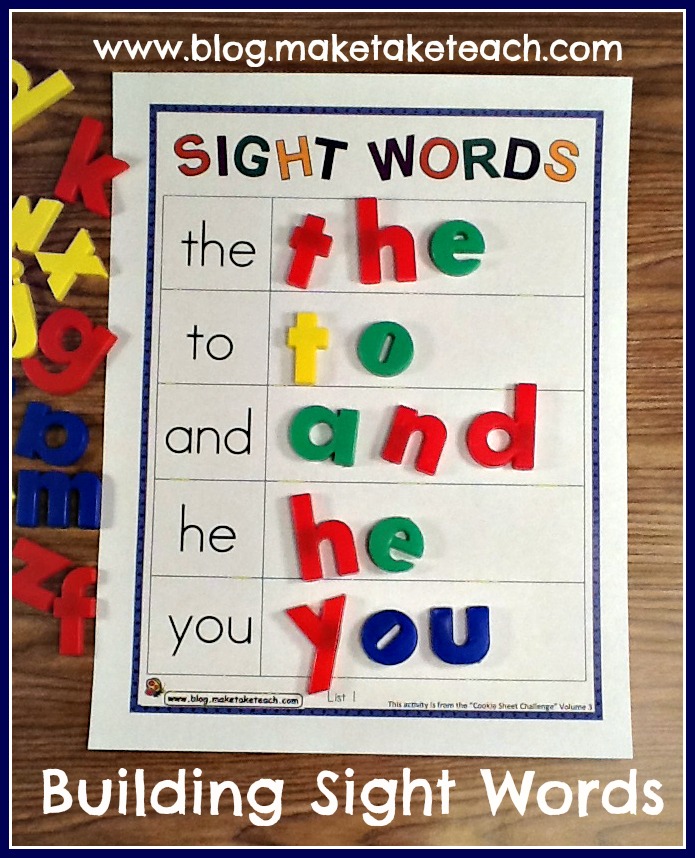
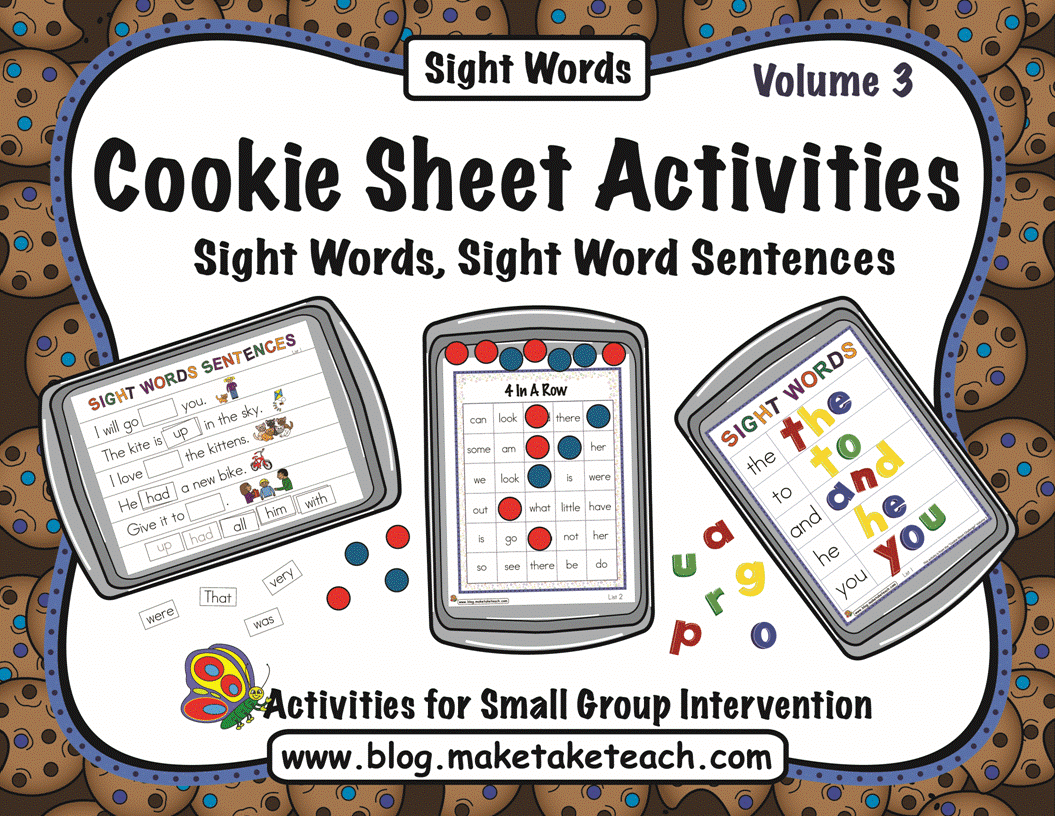
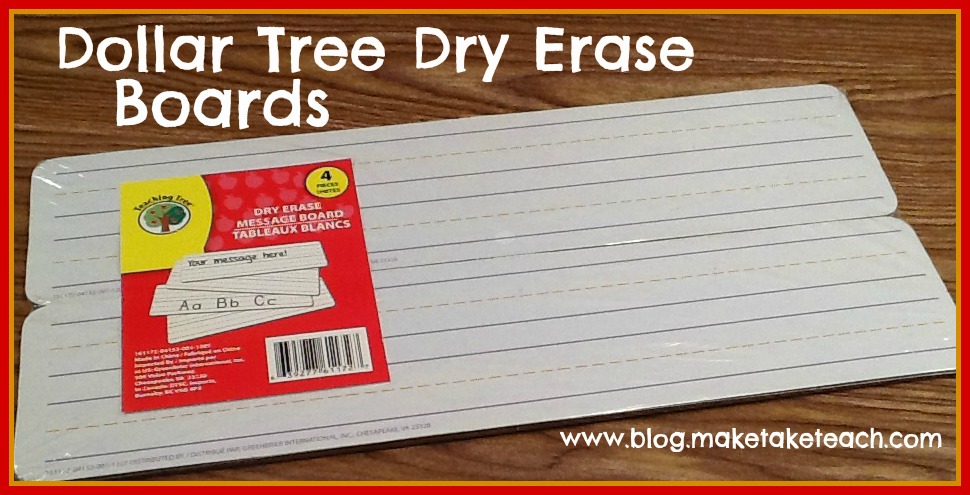

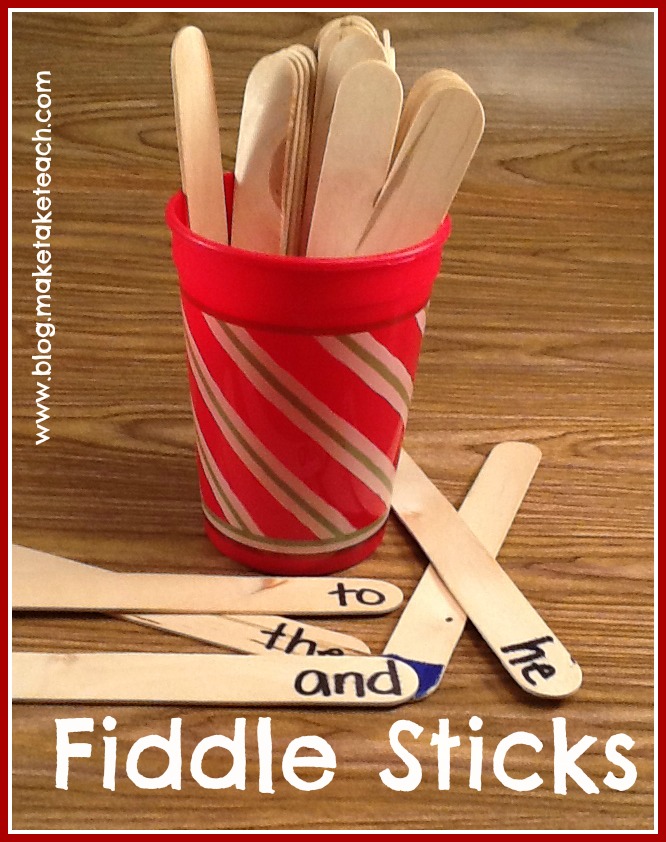
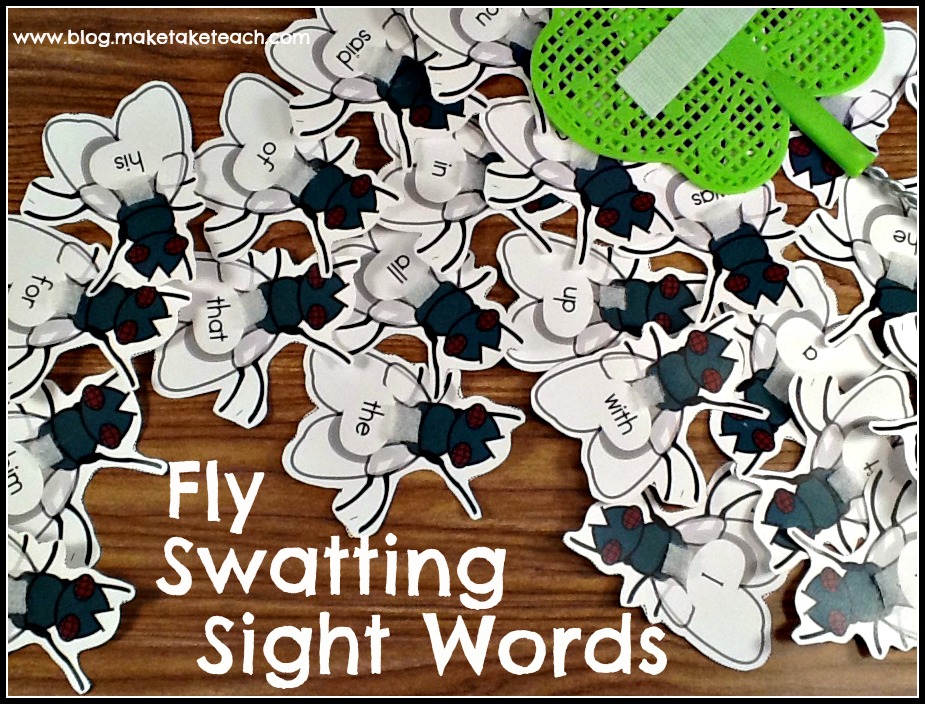
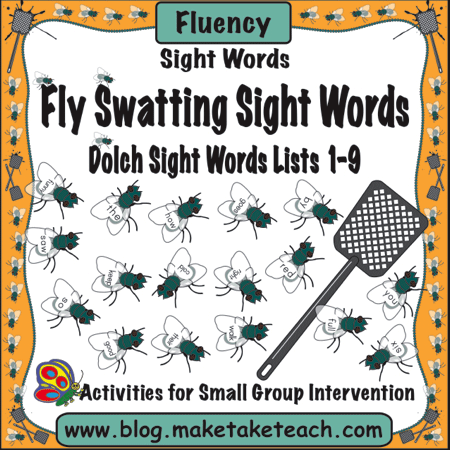
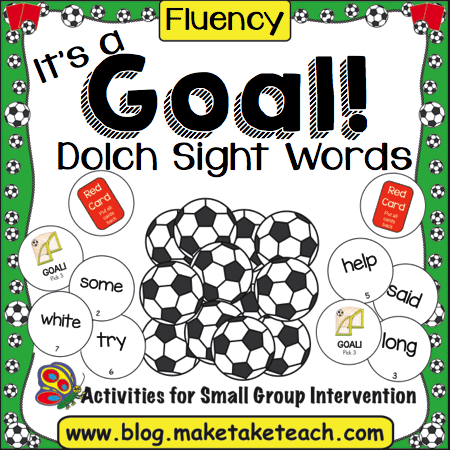
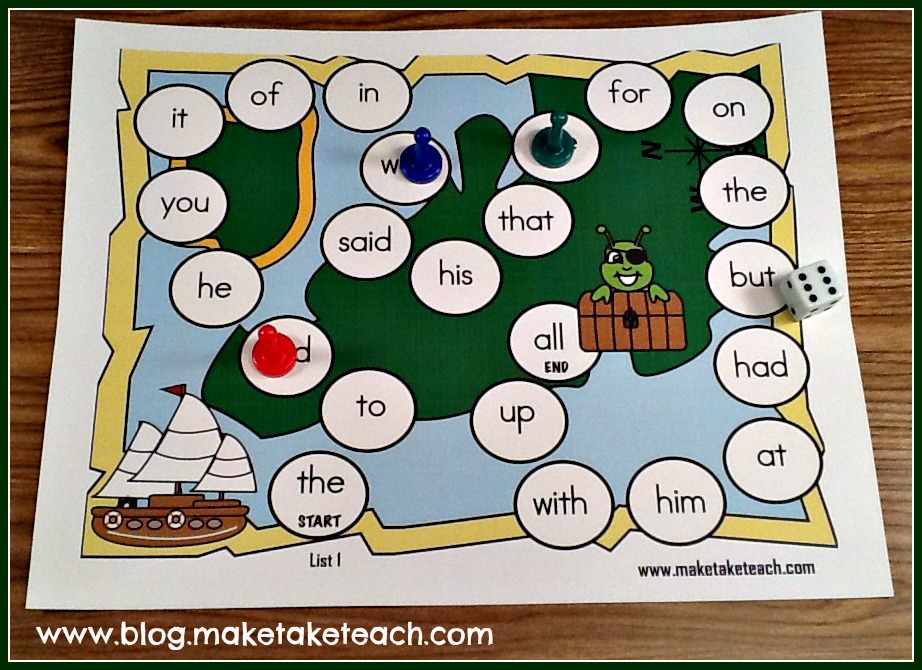
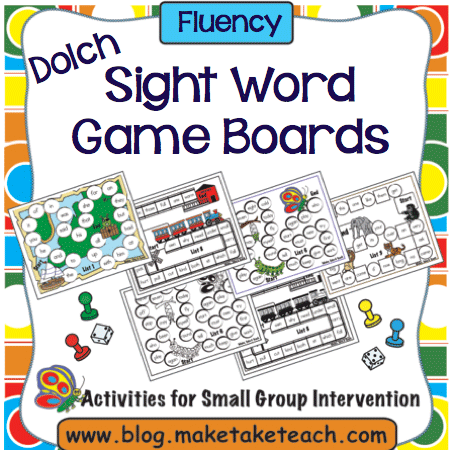
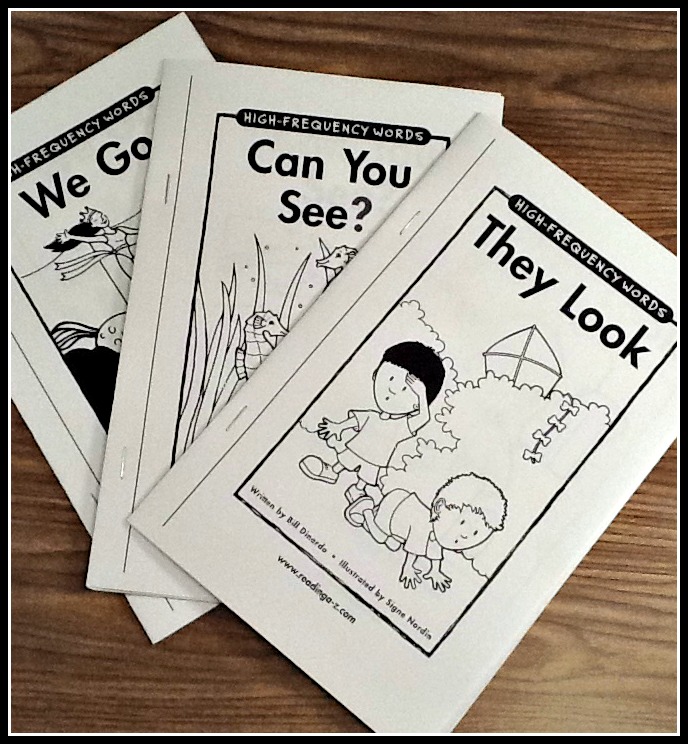
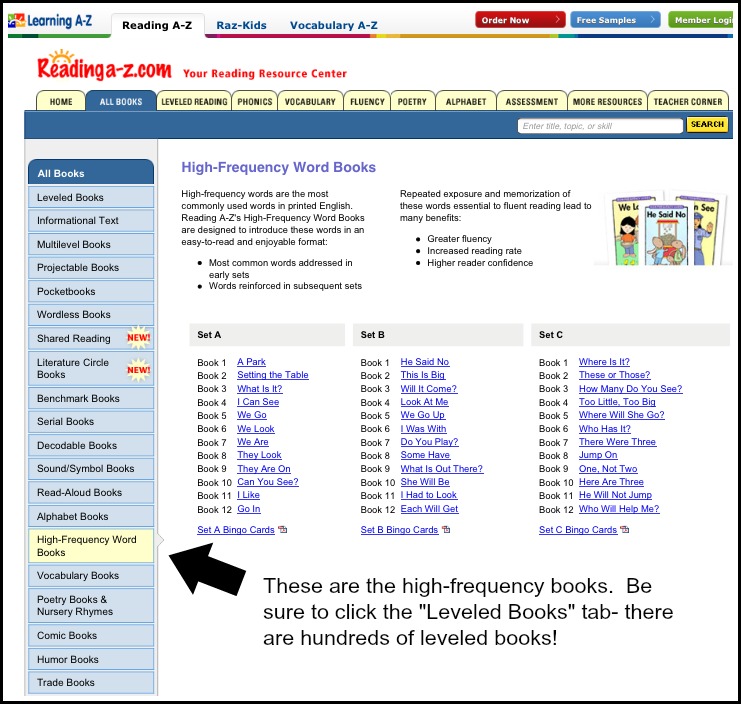

This is an awesome site I am hopeful it will help my son who is 7 and has ADHD ontop of Dyslexia thank you for sharing all these great ideas
Thanks so much for leaving a comment. Hope you continue to find ideas for helping your son. Julie
This is chock full of AWESOME activities!
Thanks so much! Glad you like the activities. Julie
I bought those dollar store boards and loved them…at first! They fell apart within the first 9 weeks! The plastic coating peels off. I’d recommend biting the bullet and getting a reputable brand that lasts.
Oh my goodness. That’s good to know. Mine are fine right now, but it hasn’t been 9 weeks yet. Thanks for sharing. Julie
We bought 20 Expo brand boards from Amazon two years ago. Some of the lines are starting to rub off, but it was worth the money, considering we’ve used them several times per week (with 20 kids, that’s hundreds of uses each board!).
This is such a great blog! I have 5 children and my youngest are 4. I’ve home “preschooled” them all and have recently been looking for some fresh ideas. This is just what I’ve been looking for! Thank you so much!!
This is an awesome blog. Always looking for new ideas and these cookie sheet ideas are awesome…
Thanks so much, Arlina. Glad you like the activities!
I work with Pre-Kinders, and I have several who are just on the brink of reading and have taken to the few sight word activities we do very quickly. I LOVE many of these ideas, and I can’t wait to make some of these — like the Fiddlesticks!
Thanks for sharing…
I just found your blog through Pinterest and enjoyed your post. I love having my kids play Fiddlesticks. I make a new set for each sight word family we study, and I have a bigger set that gets added to teach week when we learn new sight words. I use Crystal Light containers to store them. Usually, I can get three word families in one container. It’s a fabulous review and the kids love choosing it in Work on Words during Daily 5. 🙂
Karen
Hapli Ever After…in Kindergarten
I Love the wonderful activities! They will be very useful.
Do you have any ideas for younger children? My daughter just turned two. She knows her alphabet and letter sounds. She has started learning sight words but does not yet have interest in tracing. What kind of activities should I focus on? I want to keep challenging her but not to push at all.
Phonemic awareness is a big component in learning to read. For a child at this young of age, I’d really focus on skills such as rhyme (reading books with rhyme). It’s awesome that she knows her alphabet and sounds, but I wouldn’t worry about isolated skills such as sight words just yet. I know this may sound simple, but reading with and to her is the best thing that you can do right now. Reading books with rhyme and poetry builds an appreciation of the sound structure of language and reading books in general builds background knowledge and vocabulary. Hope this helps. Julie
Thank You very much for sharing your great ideas. I really learnt a lot form your creative ideas. Thank You once again 🙂